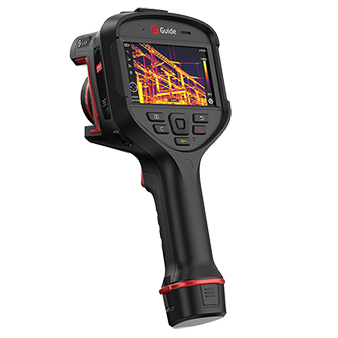
# Thermal Imaging Camera: Advanced Technology for Enhanced Vision
## Introduction to Thermal Imaging Cameras
Thermal imaging cameras, also known as infrared cameras, are revolutionary devices that capture and visualize heat signatures emitted by objects and living beings. Unlike traditional cameras that rely on visible light, these advanced tools detect infrared radiation, allowing users to “see” in complete darkness or through obscurants like smoke and fog.
## How Thermal Imaging Works
Thermal cameras operate on a simple yet powerful principle: all objects with a temperature above absolute zero emit infrared radiation. The camera’s specialized sensors detect this radiation and convert it into an electronic signal, which is then processed to create a thermal image or “thermogram.” The resulting image displays temperature variations as different colors or shades, with warmer areas typically appearing brighter.
Key Components of a Thermal Imager
Modern thermal imaging cameras consist of several critical components:
- Infrared detector (microbolometer array)
- Optical system (germanium lenses)
- Signal processing electronics
- Display unit
- User interface controls
## Applications of Thermal Imaging Technology
Industrial and Building Inspections
Thermal cameras are extensively used for predictive maintenance in industrial settings. They can identify overheating electrical components, detect insulation deficiencies in buildings, and locate moisture intrusion without destructive testing.
Security and Surveillance
Law enforcement and military personnel rely on thermal imaging for night operations, border patrol, and search-and-rescue missions. The technology enables detection of intruders or missing persons in complete darkness.
Medical and Healthcare
In the medical field, thermal cameras assist in fever screening (particularly during pandemics), detecting circulatory problems, and monitoring inflammation in tissues.
Automotive and Transportation
Many modern vehicles incorporate thermal imaging systems to enhance driver vision at night, detecting pedestrians or animals beyond the range of headlights.
## Advantages of Thermal Imaging Cameras
Thermal imaging offers several distinct benefits over other imaging technologies:
- Operates in total darkness without any light source
- Penetrates smoke, fog, and light foliage
- Non-contact temperature measurement capability
- Can detect hidden objects behind certain materials
- Provides real-time imaging without delay
## Choosing the Right Thermal Imaging Camera
Resolution Considerations
Higher resolution detectors (like 640×480) provide more detailed images but come at a higher cost. For many applications, 320×240 or even 160×120 resolutions may be sufficient.
Temperature Range and Sensitivity
Keyword: thermal imager camera
Different models offer varying temperature measurement ranges and sensitivity levels. Industrial-grade cameras typically have wider ranges than those designed for building inspections.
Additional Features
Modern thermal cameras may include features like:
- Bluetooth/Wi-Fi connectivity
- Image fusion (combining thermal and visible light images)
- Video recording capabilities
- Advanced analytics software
## Future of Thermal Imaging Technology
The thermal imaging market continues to evolve with advancements in detector technology, miniaturization, and cost reduction. Emerging applications include autonomous vehicles, smart home systems, and augmented reality interfaces. As the technology becomes more affordable, we can expect to see thermal imaging integrated into more consumer devices and everyday applications.
With their unique ability to visualize heat signatures and temperature variations, thermal imaging cameras have become indispensable tools across numerous industries, enhancing safety, efficiency, and diagnostic capabilities